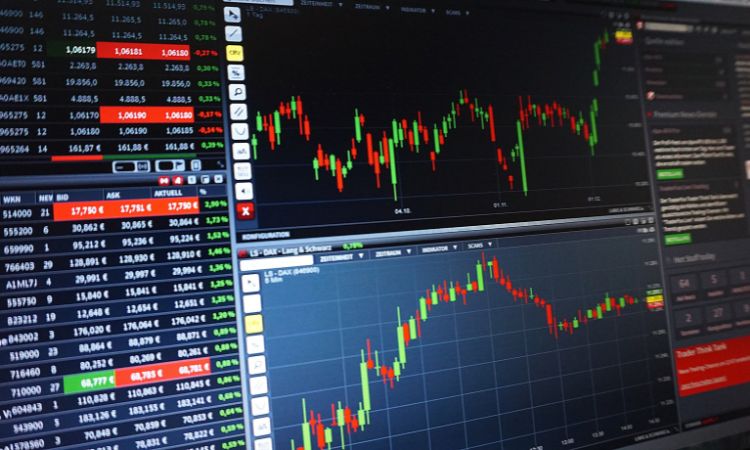Risk Management in Forex Trading- An Ultimate Guide
Risk management plays an important role in a successful forex trading strategy. By understanding the different types of risks associated with the foreign exchange market, traders can develop an effective risk management plan to help ensure long-term profitability and minimize losses.
Risk management can help traders identify areas of their current trading strategy that may be leading to large losses. As well as to understand the pinpoint potential new opportunities that could provide greater returns than their current positions.
It is important to evaluate how much leverage a trader is willing to use. How often they would like to trade and other factors such as stop-loss orders that could help protect profits.
Understanding these concepts and applying them appropriately can help traders make better trading decisions and ultimately become more profitable in the forex market.
Let’s take a looking into how to do risk management in forex trading and what software to use for risk management.
Identifying Risks in Forex Trading
1. Types of risks in forex trading
We cannot stress more the importance of risk management in Forex. It should be given due care and never be ignored. Here are 3 main types of risk management in forex trading.
- Market Risk
Market risk involves the risk of losing money due to fluctuations in market conditions. To protect yourself from market risk, it’s important to understand how different currencies interact with each other and how their prices may change over time.
You should also pay close attention to any news or events that could potentially affect the price of a currency pair you are trading. As a result, you will be able to make informed decisions when it comes to purchasing or selling a currency pair.
- Liquidity Risk
Liquidity risk is the risk of not being able to easily enter or exit a position due to a lack of buyers/sellers in the market. To reduce your liquidity risk, you should make sure that you are only trading liquid markets with high liquidity such as EUR/USD, GBP/USD, and USD/JPY.
Additionally, you should use a broker that offers low spreads so that you can enter and exit positions quickly without incurring excessive fees.
- Systemic Risk
Systemic risk is the risk of losses due to external factors such as economic recessions or government regulations which are beyond an individual trader’s control.
To protect yourself from systemic risks, it’s important to invest across a variety of asset classes and markets. So that if one sector takes a hit, your other investments can offset any losses incurred by the affected asset class or market.
Additionally, it’s wise not to invest more than 10% of your portfolio into any single asset class or market at one time. As this will further reduce systemic risks associated with forex trading.
2. How to identify risks in forex trading?
So what is proper risk management in Forex? Risk assessment should be a part of any strategy for trading on the foreign exchange market. Understanding the potential outcomes of a particular trade and assessing your current position can help you accurately identify potential sources of risk. This includes evaluating factors such as leverage, stop-loss orders, time frames, and more.
3. Tools and techniques for identifying risks
There are many tools that can be used to assist with risk assessment in forex trading.
These include position sizing calculators, volatility indicators, margin calculators, and other financial tools available to traders.
Additionally, traders should consider using risk management strategies. Such as stopping loss orders or setting up protective hedges when appropriate to protect their capital from unexpected losses.
Related: CGS – Consistent Growth Strategy
How to do Risk Management in Forex Trading?
1. Make risk management strategies
Risk management is essential in foreign exchange trading. There are various strategies that traders can use to help mitigate risk, such as setting up stop-loss orders or using protective hedges. It is also important to research different types of risk and understand their potential impacts on a trader’s position.
2. How to implement risk management strategies?
Implementing an effective risk management strategy requires a combination of understanding and experience. Traders should begin by researching risk types, and then set up defensive measures such as stop-loss orders, leverage limitations, or other tools which can help protect against large losses.
Additionally, traders may want to consider utilizing hedging strategies when appropriate in order to mitigate risks associated with currency movements.
3. Examples of successful risk management in forex trading
One example of successful risk management can be seen in a trader using both stop-loss orders and protective hedging strategies. By employing both tools, the trader can limit their downside exposure while still allowing for potential gains if the trade moves in the desired direction.
Another example is limiting leverage usage and monitoring open positions closely. So that any unexpected changes or price movements do not result in large losses due to excessive leveraging.
Related: BAN- Best Asset Now
Hedging in Forex Trading
What is hedging?
Hedging is a risk management strategy that involves entering into financial transactions in order to offset potential losses from another investment or speculation. In the foreign exchange market, traders may use currency hedging to protect against loss due to changes in currency values.
Hedging techniques in forex trading
There are various hedging strategies that traders can use to help protect their positions, such as buying options, futures contracts, and spot trades. Additionally, traders can use tools such as stop-loss orders and leveraging strategies when appropriate to limit downside exposure.
Advantages and disadvantages of hedging
Hedging strategies can provide protection against unexpected market movements and reduce the risk of large losses. However, it is important to consider the costs associated with these strategies, such as fees for options or futures contracts. As well as any potential limitations which may be imposed by your broker or institution.
Hedging can be beneficial for risk management, providing advantages such as increased cost efficiency and stability, risk transfer including hedges against inflation, and more accurate forecasting.
Unfortunately, there are still drawbacks associated with hedging. These disadvantages include having to pay additional costs for services and materials required to form a hedge. As well as the fact that it can limit profit potential due to the capping of gains.
Additionally, the process of understanding how to properly hedge and implement it can be intensive in terms of expertise. That needs to be acquired to understand the complexities of applying hedging tools and strategies.
Despite this, hedging still creates a safer environment when it comes to conducting financial transactions or decisions.
Tools and Software For Risk Management in Forex Trading
Risk management helps traders to identify and manage risks associated with their investments and can help them maximize their returns. The right risk management tools and software, enable traders to take informed trading decisions and minimize losses.
How to choose the right risk management tool for your trading strategy?
When it comes to choosing the right risk management tool for your trading strategy, there are a few things to consider.
First, you need to determine what type of risk you’re trying to manage: market risk, credit risk, operational risk, or liquidity risk. Once you’ve identified the type of risk you’re dealing with, you can then choose a tool that best fits your needs.
Popular Forex risk management tool and software in the market?
There are many popular risk management tools and software in the market today. Some of the most widely used include:
- Risk Management Studio
- SAP Risk Management
- Proofpoint Intelligent Compliance
- Fusion Framework System
- LogicManager
- MetricStream
No matter which tool you choose for your trading strategy, it’s important to remember that proper risk management is key to success in any investment endeavor. By using the right tools and software for your needs, you can ensure that your investments are as safe as possible while still maximizing returns.
Related: OTS – Options Trading Signals
Conclusion
By understanding these types of risks associated with forex trading market risk, liquidity risk, and systemic risk and reducing them with software you can get successful in trading very soon.
Moreover, by implementing appropriate strategies for mitigating each type of risk appropriately, traders can ensure their long-term success in forex trading. Hence they can minimize the potential losses while maximizing potential gains from their investments in foreign currencies.
In a nutshell, with proper preparation and careful consideration of all possible risks involved, traders can confidently enjoy success in this exciting form of investment.
For more, you can read risk management in forex trading pdf or risk management forex lot size pdf book.
Check other services by Chris Vermeulen thetechnicaltrader.com, thegoldandoilguy.com & revesting.com






